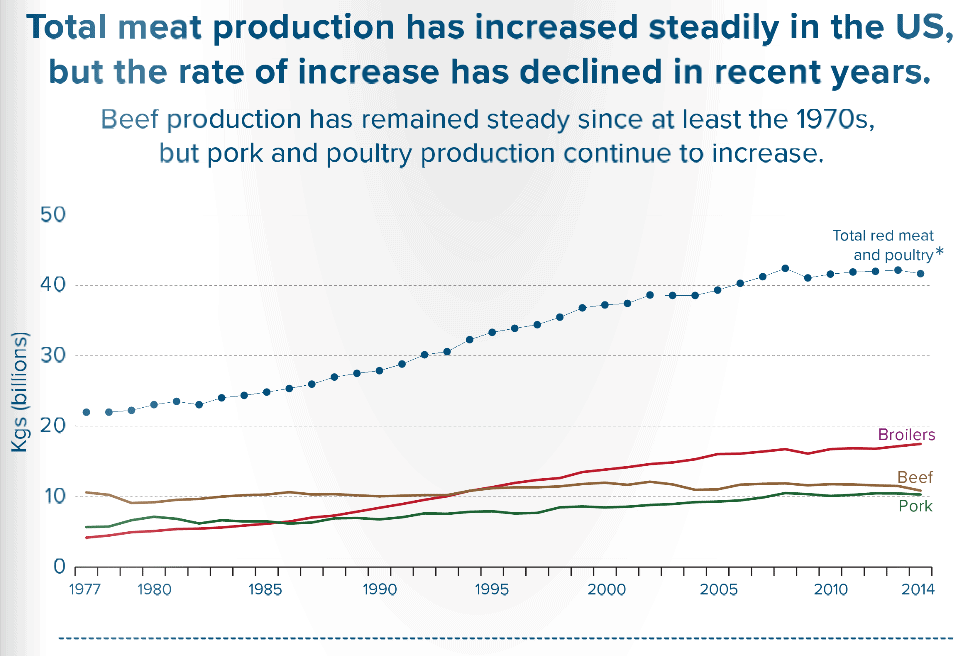January 08, 2016

A weekly roundup of news on drug resistance and other topics in global health.
Latest data on antimicrobial use in food-producing animals in the United States is represented in graphics on the CDDEP website. Original graphics based on the recent FDA 2014 Summary Report On Antimicrobials Sold or Distributed for Use in Food-Producing Animals show increases in US meat production and increases in antibiotic use per kg of animal raised between 2009 and 2014. [CDDEP]
The Lancet series “Antimicrobials: access and sustainable effectiveness,” which appeared online during Antibiotic Awareness Week in November 2015, appears in print in this week’s issue. The lead article, “Access to effective antimicrobials: a worldwide challenge,” discusses the dual goals of reducing deaths due to antibiotic resistance and providing access to antimicrobials for those who still can’t get them worldwide. CDDEP Director Ramanan Laxminarayan led the team of authors. [The Lancet]
MCR-1, the colistin resistance gene identified in China last November, has been discovered across the globe. Isolates have been identified in human or animal samples collected in Belgium, Canada, Denmark, France, Germany, Japan, the Netherlands, Thailand, the UK and Vietnam. Many were also resistant to other antibiotic classes, including carbapenems, and many were ESBL producers. An article in Nature (referencing CDDEP’s ResistanceMap) noted that the prevalence of mcr-1 doesn’t signal the “bacterial apocalypse”—but warns that if current practices continue, it’s not far down the road. [Nature, National Geographic]
The world’s first dengue vaccine was approved in Brazil, Mexico and the Philippines in December. “Dengvaxia,” a Sanofi product, reduced likelihood of development of dengue by about 60 percent in clinical trials. It is approved for people 9-45 years of age in dengue-endemic areas. [Scientific American]
Tobacco users are more likely to receive a prescription for antibiotics than abstainers, according to research published in the American Journal of Preventive Medicine. Based on National Ambulatory Medical Care Survey data from 2006–2010, tobacco users had 20-30% higher odds of receiving antibiotics than nonusers. [Reuters, American Journal of Preventive Medicine]
Co-trimoxazole appears to lower the risk of malaria in people with HIV/AIDS. Prophylactic co-trimoxazole is recommended by the WHO for HIV-1 patients in areas with high infectious disease rates, including malaria. A randomized trial in a Kenya found that when co-trimoxazole prophylaxis was discontinued in immune-reconstituted HIV-1 patients who had received antiretroviral therapy (ART), malaria incidence—but not pneumonia or diarrhea incidence—increased. [PLOS]
Minor flu strains may be more of a threat than previously thought. A letter from NYU researchers in Nature Genetics reported that minor flu strains from Hong Kong in the 2009 flu pandemic—which were not vaccinated against like the major flu strains from that season—were widespread and passed quickly through the affected patients. Whole genome deep sequencing of patients and their contacts revealed that several minor strains were present in nearly every patient, and as they spread, became more prevalent in the mix of influenza viruses that patients had. According to senior author Elodie Ghedin, the “findings reveal an ability of minor strains to elude these vaccines and spread the virus in ways not previously known.” [NYU, Nature Genetics]
A time lag between consultation for respiratory infections and taking antibiotics can reduce antibiotic use. Research published in JAMA compared four antibiotic strategies in patients with uncomplicated respiratory infections: 1) patients were told not to take antibiotics unless they didn’t feel better after three days, but were given the antibiotics to take home; 2) patients were also told to wait three days, but had to go to a primary care center to get antibiotics; 3) patients were given antibiotics at the consultation and told to take them; and 4) patients were given no antibiotics. Both delaying strategies (1 and 2) reduced antibiotic use compared with those who began antibiotics immediately, but strategy 2 worked best: 23 percent took the antibiotics versus 32 percent of those in the antibiotic take-home group. The delayed-strategy patients had a few more days with symptoms than did the immediate-antibiotics group, but the symptom burdens were clinically similar. [Reuters, JAMA]
Want to share interesting news via the digest? Email [email protected]











